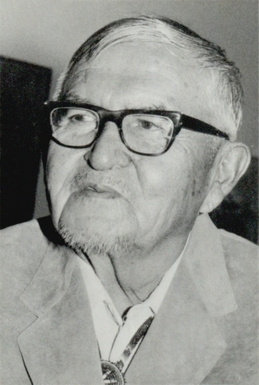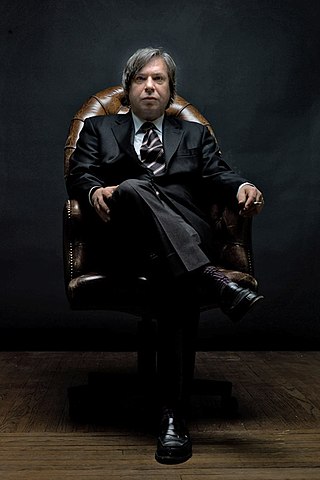
Visual art of the United States or American art is visual art made in the United States or by U.S. artists. Before colonization, there were many flourishing traditions of Native American art, and where the Spanish colonized Spanish Colonial architecture and the accompanying styles in other media were quickly in place. Early colonial art on the East Coast initially relied on artists from Europe, with John White the earliest example. In the late 18th and early 19th centuries, artists primarily painted portraits, and some landscapes in a style based mainly on English painting. Furniture-makers imitating English styles and similar craftsmen were also established in the major cities, but in the English colonies, locally made pottery remained resolutely utilitarian until the 19th century, with fancy products imported.

Allan Capron Houser or Haozous was a Chiricahua Apache sculptor, painter, and book illustrator born in Oklahoma. He was one of the most renowned Native American painters and Modernist sculptors of the 20th century.

Fritz William Scholder V was a Native American artist, who produced paintings, monotypes, lithographs, and sculptures. Scholder was an enrolled member of the La Jolla Band of Luiseño Indians, a federally recognized tribe of Luiseños, a California Mission tribe. Scholder's most influential works were post-modern in sensibility and somewhat Pop Art in execution as he sought to deconstruct the mythos of the American Indian. A teacher at the Institute of American Indian Arts (IAIA) in Santa Fe in the late 1960s, Scholder instructed prominent Native American students.
Philip Kwame Apagya is a Ghanaian photographer who specialises in colour studio portraits against painted backdrops. He lives and works in Shama, Ghana.
Mario Martinez is a Native American contemporary abstract painter. He is a member of the Pascua Yaqui Tribe from New Penjamo, the smallest of six Yaqui settlements, in Arizona. He lives in New York City.
Joe Bradley is an American visual artist, known for his minimalist and color field paintings. He is also the former lead singer of the punk band Cheeseburger. Bradley has been based in New York City and Amagansett.
Kay WalkingStick is a Native American landscape artist and a member of the Cherokee Nation. Her later landscape paintings, executed in oil paint on wood panels often include patterns based on Southwest American Indian rugs, pottery, and other artworks.

Ledger art is narrative drawing or painting on paper or cloth, predominantly practiced by Plains Indian, but also from the Plateau and Great Basin. Ledger art flourished primarily from the 1860s to the 1920s. A revival of ledger art began in the 1960s and 1970s. The term comes from the accounting ledger books that were a common source of paper for Plains Indians during the late 19th century.
The Kiowa Six, previously known as the Kiowa Five, is a group of six Kiowa artists from Oklahoma in the early 20th century, working in the "Kiowa style". The artists were Spencer Asah, James Auchiah, Jack Hokeah, Stephen Mopope, Monroe Tsatoke and Lois Smoky.

George Condo is an American visual artist who works in painting, drawing, sculpture and printmaking. He lives and works in New York City.
Stephen Mopope (1898–1974) was a Kiowa painter, dancer, and Native American flute player from Oklahoma. He was the most prolific member of the group of artists known as the Kiowa Six.
Truman Tennis Lowe (Ho-Chunk) was an American sculptor and installation artist. A professor of fine art at the University of Wisconsin, Lowe also served as a curator of contemporary art at the National Museum of the American Indian. He is known for large site-specific installation pieces using natural materials.

Hugh Auchincloss Steers was an American painter whose work is in the Metropolitan Museum of Art, the Whitney Museum of American Art, the Walker Art Center, and the Denver Art Museum. He died of AIDS at the age of 32.

Jeffrey A. Gibson is an American Mississippi Choctaw/Cherokee painter and sculptor. He has lived and worked in Brooklyn, New York; Hudson, New York; and Germantown, New York.
Joe Fig is an American artist and author best known for his paintings, sculptures, drawings and photographs that explore the creative process, the working lives of artists, and the spaces where art is made. His work draws from Western art history, the mythology of art, and visual culture.
Nina Chanel Abney is an American artist, based in New York. She was born in Harvey, Illinois. She is an African American contemporary artist and painter who explores race, gender, pop culture, homophobia, and politics in her work.

Leslie Wayne is a visual artist who lives and works in New York. Wayne is best known for her "highly dimensional paintings".
Radcliffe Bailey was an American contemporary visual artist noted for mixed-media, paint, and sculpture works that explore African-American history. He was based in Atlanta, Georgia.
Claudette Schreuders is a South African sculptor and painter operating out of Cape Town, South Africa. She is known mainly for her carved and painted wooden figures, which have been exhibited independently and internationally in galleries and museums. She is the first South African artist to have a sculpture acquired by the Metropolitan Museum of Art. Schreuders has been a finalist for both the Daimler Chrysler Award and the FNB Vita Art Prize, which is South Africa's version of the Turner Prize.
Jack Shainman Gallery is a contemporary art gallery in New York City. The gallery was founded by Jack Shainman and his then-partner Claude Simard (1956—2014) in 1984 in Washington, D.C. The gallery has a focus on artists from Africa, East Asia, and North America.










